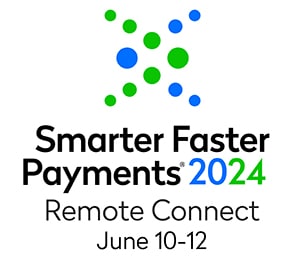
Individually, banks and fintech companies are pushing forward with embedded solutions, yet many are finding they can achieve more, faster by collaborating with each other.
Why are strategic alliances for payments becoming so important?
With bank-fintech partnerships, each party can contribute specific expertise and technologies to jointly innovate and speed delivery of solutions. Together, they can offer differentiating capabilities, bridge gaps, cover compliance needs, and simplify implementation – all of which help drive growth by better serving customers.
What’s in it for each partner? Let’s look at some key benefits from each perspective. Here we’ll focus on cases where banks and fintechs are designing solutions for corporate clients.
How banks benefit (with a fintech alliance)
From megabanks to community financial institutions (FIs), barriers to innovation often include rigid legacy systems, competing priorities, and lack of in-house resources.
It’s no coincidence that as the embedded payments market is ramping up, 70% of banks say fintech partnerships are important to their business strategies. According to insights from Ron Shevlin at Cornerstone Advisors, banks must “refocus innovation efforts on tangible process improvement and revenue creation.”
Our take at Beyond the Arc is that the embedded payment space offers this opportunity. Partnering with fintechs for payments innovation can give banks strategic advantages:
- Meet more client needs. Many businesses are looking to simplify payment operations. By offering an embedded payments solution (say, that’s integrated into a treasury platform), banks can help solve client pain points and address unmet needs. Linking the bank’s robust infrastructure with a fintech’s specialized technology can be an innovative way to develop new revenue streams and bolster the client experience. It can also be an opportunity for FIs to tap into niche markets they were previously unable to reach, that a fintech serves well.
- Innovate faster. Many fintechs are at the forefront of innovation, and use agile approaches to develop and iterate quickly. As banks are rarely able to operate that way, a dynamic collaboration can be the fast-track to getting ahead in a fiercely competitive market. FIs might also benefit from the fintech’s insights into the user experience of their software.
- Differentiate with fast implementation. Fintech solutions are often built for easy integration with cloud, microservices, and APIs. For embedded payments, a fintech alliance enables banks to offer B2B clients the compelling advantage of implementing new capabilities in weeks, instead of months. And do it without all the heavy lifting, requiring only minimal IT resources.
- Evolve at the speed of change. Another key benefit for banks – and their clients – is that embedded payment solutions can more easily evolve over time. Ideally, a strong, reliable fintech partner can keep their platform updated to leverage emerging technologies, meet new demands, and address changing regulatory needs. As an example, fintech alliances may give banks more ways to enable clients to access new payment rails like FedNow® for real-time money movement.
How fintechs benefit (with a bank alliance)
Unlike banks that serve a broad spectrum of needs, fintech firms typically innovate for very targeted use cases. For example, a fintech may make it easier for businesses to automate accounts payable, streamline treasury management, or integrate multiple payment gateways. Yet many of those B2B platforms have something missing, a gap in the client experience: embedded payments.
Even if clients have numerous capabilities within a fintech platform, for actual money movement, they usually have to switch to another portal to complete transactions. Whether it’s handling card or ACH payments, or accessing other payment rails, it often involves effort outside of the current workflow environment. Users might even need to access a third system, such as their ERP, to sync everything together. The net effect is a fragmented payment experience.
Partnering with a leading bank for embedded B2B payments, fintech companies can build more value into their platform to better satisfy clients, while improving operational efficiency. For example:
- Offer more payment options (and monetize!). Fintechs may be able to take advantage of a bank’s full range of payment rails, including instant payments which are increasingly popular. Embedding a bank’s payment capabilities into a fintech platform may be simpler and more cost-effective than dealing with multiple third-party payment providers. It may also enable the fintech to customize preferred rails for different clients, and monetize rails like real-time payments, charging a convenience fee for fast, 24/7/365 transactions.
- Simplify regulatory compliance. Enabling clients to send and receive money comes with complex regulatory requirements. While managing it all and staying current can be tough for fintechs, banks are built for it. A collaborative embedded B2B payments solution may make compliance easier for fintechs. Payment processing and reporting can transmit directly between the fintech platform and the bank, and the bank can provide valuable support to meet compliance needs.
- Expand reach to new clients and markets. Partnering to design customized solutions for bank clients can be a powerful way for fintechs to increase exposure to a broader client base. This alliance might also help companies forge into new markets, potentially serving new verticals and expanding globally. And in some cases, the bank partner may be in a position to manage customer support.
Success in Embedded Finance with Bank-Fintech Alliances
Beyond the Arc CEO, Steven Ramirez co-hosts this session to explore the power of bank-fintech partnerships to jointly innovate, enhance customer experiences, and help clients drive growth. Learn more >
Wed. June 12, 12:30 – 1:20 PM Eastern
Creating mutually beneficial collaborations for embedded B2B payments
Along with delivering critical advantages to each party, these dynamic collaborations can also provide benefits that serve them mutually. Consider a few embedded payments examples:
- Speed time to market for differentiating solutions. Alliances combine the agile innovation of a fintech with a bank’s infrastructure and financial industry knowledge. This can make it easier for both parties to more quickly and effectively deliver solutions that are finely tuned to new market demands for embedded B2B payments – and help both parties differentiate.
- Power each other’s brand. A collaboration can tap into the best qualities inherent to each party’s brand. Banks may represent strength, stability and trust, which can be a valuable counterpoint for younger fintech firms. On the flip side, fintechs often bring an innovative, modern, and user-centric focus that can re-vitalize more traditional banking institutions.
- Improve sales and revenue-sharing. Banks and fintechs may benefit from access to each other’s client base to build sales momentum for embedded payment solutions. These partnerships can also support sustainability by enabling revenue-sharing models that benefit both parties. For instance, it might be through shared transaction fees, tiered payment structures, or other models.
- Enhance data-driven decisions. Embedding payment capabilities into fintech platforms can deliver data-rich insights that can be highly valuable to each party. Fintechs can capture payment information from transactions to identify opportunities to improve their platform, and offer spending analytics as a value-add service for clients. Banks can leverage electronic payments data for deep insight into client behaviors and preferences to improve segmentation and targeted marketing.
Powering embedded payment alliances
How Beyond the Arc can help
Creating a bank-fintech partnership is the first step toward speeding innovation for both parties. Bringing those new solutions to market and driving growth is the next big leap – and that’s where Beyond the Arc can help.
For 20 years, our agency has been immersed in financial services as well as working at the forefront of innovation in fintech and payments. From strategic positioning to content creation for many channels, we help banks, fintechs, and other technology providers deliver differentiated marketing to stand out in the crowd and help fuel the sales cycle.
Curious to explore?
Book a quick call
Schedule a 15-min. chat with Steven Ramirez, Beyond the Arc CEO
Need an edge for marketing embedded payments?
Image source: Pixabay


